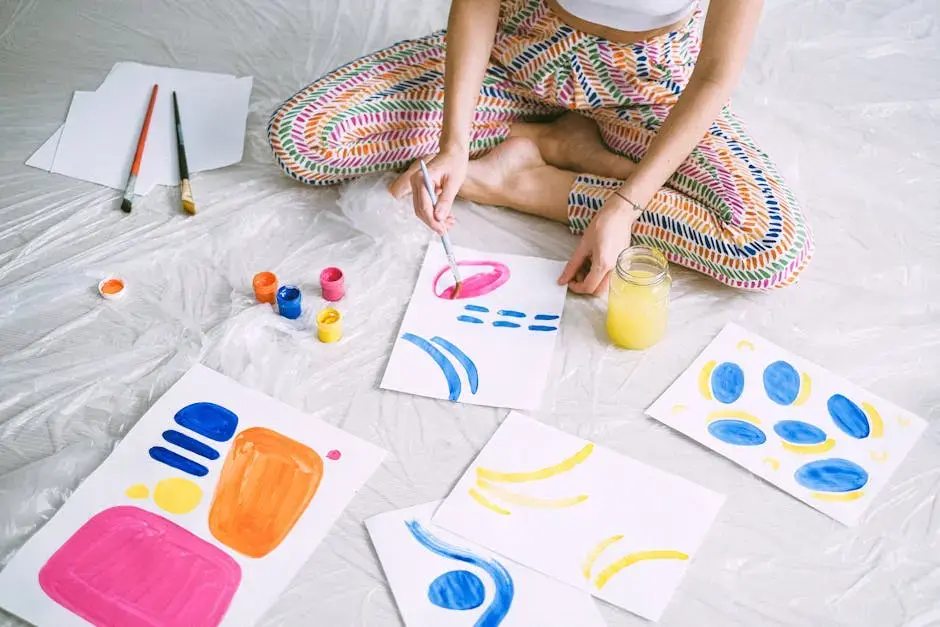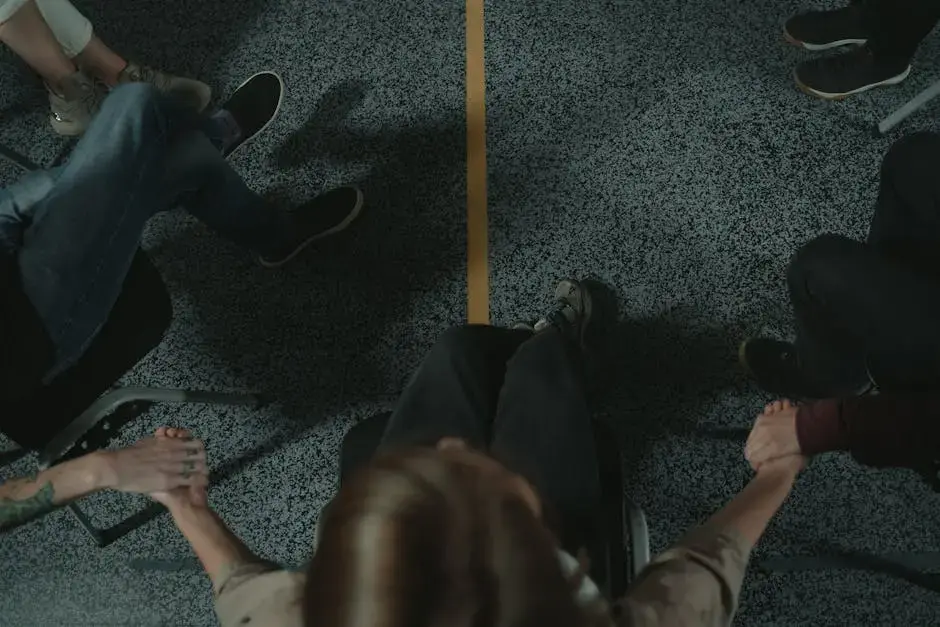10 Ways Creative Therapy Can Enhance Your Life
- Karrie Stafford

- Nov 29, 2024
- 5 min read
Creative therapy offers a vibrant means to unlock your potential and enhance emotional well-being. By engaging in artistic pursuits, you tap into a powerful tool that fosters self-expression, healing, and personal growth. This blog explores various ways creative therapy can profoundly impact different aspects of your life, providing you with inspiration and motivation to embrace your creativity.

1. Enhancing Emotional Expression
One of the most significant benefits of creative therapy is its ability to enhance emotional expression. Artistic activities such as painting, drawing, or music allow individuals to convey feelings that they may struggle to articulate in words. This form of expression is particularly valuable for those who have experienced trauma or are dealing with intense emotions. By translating feelings into art, individuals can explore their emotions in a safe environment, making the healing process more accessible.
Incorporating creative therapy into daily routines offers a unique outlet for emotional release. For instance, someone might take up journaling to document their feelings or frustrations, transforming negative energy into something tangible and beautiful. This act of creation serves as both a release and a form of self-reflection. As individuals delve deeper into their artistic outlets, they often discover hidden layers of their emotions, which can foster deeper understanding and clarity.
Furthermore, engaging in creative pursuits can help cultivate a sense of vulnerability, allowing individuals to confront their feelings head-on. This newfound courage to express emotions also promotes healthier relationships and social connections. When people share their artistic creations, they invite others to witness their vulnerabilities, often leading to deeper bonds based on mutual understanding.
2. Reducing Stress and Anxiety
Creative therapy serves as an effective strategy for reducing stress and anxiety in various forms. Activities such as painting or pottery involve focus and mindfulness, allowing the mind to drift away from daily worries. As individuals immerse themselves in their creative projects, they often find themselves in a state of flow, where time seems to stand still. This state not only provides relief but also equips the mind to better manage stressors.
Moreover, engaging in creative therapy can act as a form of meditation. Just as mindfulness practices encourage individuals to concentrate on their breathing, art encourages a similar focus on the process of creation. The simple act of mixing colors or shaping clay can serve as a calming ritual that grounds individuals, promoting relaxation and reducing anxiety.
Ultimately, these creative outlets are more than just activities; they are essential forms of self-care that promote mental health. Evidence supports that individuals who invest time in creative pursuits often report lower levels of stress and heightened emotional stability. These benefits can ripple through other areas of life, making it easier to cope with challenges.
3. Boosting Self-Confidence
Creative therapy plays a pivotal role in boosting self-confidence. By engaging in the creative process, individuals begin to recognize their unique talents and abilities. Completing a painting, finishing a poem, or crafting a piece of music can instill a sense of accomplishment that significantly enhances self-esteem. Each completed project serves as a tangible reminder that one's creativity knows no bounds.
The journey of creative expression often involves stepping outside one’s comfort zone, which can be daunting. However, as individuals take small risks in their artistic pursuits, they gradually build resilience and confidence. Each new technique learned or style explored reinforces the belief that they are capable of growth and change. Over time, this confidence spills over into other life areas, empowering individuals to tackle challenges with newfound determination.
4. Improving Communication Skills
Creative therapy does not only focus on personal expression; it also fosters better communication skills. When individuals engage in creative activities, they often explore new ways to share their thoughts and feelings. For instance, writing poetry or storytelling can help articulate complex emotions that might be difficult to express in everyday conversation.
Additionally, participating in group art classes or workshops provides opportunities for collaboration. Working with others encourages individuals to articulate their ideas, fostering dialogue and openness. This interactive approach to creativity not only enhances communication but also builds a sense of community and support among participants.
Through creative therapy, individuals often discover new narratives and perspectives that broaden their understanding of others. By exploring and appreciating various forms of expression, individuals enhance their emotional intelligence and empathy, ultimately enriching their communication skills.
5. Encouraging Mindfulness and Presence
One of the fundamental principles of creative therapy is its ability to encourage mindfulness and presence. By focusing on the creative process, individuals can train their minds to be more present and attentive. This mindfulness practice is vital for reducing distractions and enhancing emotional clarity. Even in moments of chaos, artistic expression serves as an anchor, helping individuals find calm amid the storm.
Creative activities often require participants to immerse themselves entirely in the experience, whether it be sketching a landscape or crafting music. This immersion creates an opportunity for relaxation and introspection, which is often difficult to achieve in fast-paced daily life. As people become absorbed in their creativity, they learn to appreciate the moment, finding joy in simple processes.
6. Fostering Personal Insight
Creativity is a powerful tool for self-discovery. Engaging in creative therapy encourages individuals to reflect on their experiences, beliefs, and emotions. The process of creating art often unveils subconscious thoughts and feelings that may have been buried over time. This exploration can lead to significant personal insights and a greater understanding of one's identity.
For many, creative therapy serves as a mirror, reflecting deeper truths and guiding individuals toward a healing journey. By expressing emotions through art, individuals can confront challenging aspects of their lives. This confrontation is crucial for personal growth, as it allows for real change to take place.
7. Building Resilience Through Creativity
Resilience is the ability to bounce back from adversity, and creative therapy significantly contributes to cultivating this trait. By engaging regularly in creative practices, individuals develop coping skills that empower them to face challenges with a more positive outlook. The act of creating art allows for growth through exploration, experimentation, and sometimes failure, all of which teach valuable lessons.
Moreover, creativity provides a sense of continuity and purpose in the face of turbulence. When individuals turn to their artistic outlets, they find solace in routines that counteract life’s unpredictability. Establishing a creative practice enables individuals to channel their emotions into productive endeavors, fostering resilience and emotional strength over time.
8. Nurturing Relationships and Connection
Creative therapy has a remarkable ability to nurture relationships and connections. Artistic collaboration, such as group painting workshops or community art projects, fosters bonds among participants and encourages teamwork. These experiences create a safe space where individuals can express themselves while also learning to appreciate the contributions of others.
Participating in creative activities provides opportunities for shared experiences and mutual support. This collaborative spirit can deepen friendships and create a sense of belonging, essential for overall well-being. Additionally, when individuals share their artistic journeys with loved ones, it paves the way for meaningful conversations and deeper relationships.
9. Unlocking Problem-Solving Abilities
Engaging in creative therapy can optimize one's problem-solving abilities. The very nature of creativity encourages thinking outside the box and examining problems from different angles. By experimenting with various artistic techniques, individuals learn to approach challenges with a flexible mindset, sparking innovative solutions in both artistic projects and everyday life.
This innovation fosters confidence in one's ability to tackle obstacles, whether it's crafting an art piece or resolving a real-life dilemma. As individuals practice problem-solving through creativity, they also develop resilience against setbacks, using them as learning opportunities rather than roadblocks.
10. Exploring New Avenues for Growth
Creative therapy opens the door to exploring new avenues for personal growth. Engaging in various forms of artistic expression can introduce individuals to unknown talents and hidden passions. This discovery process propels people into new experiences and opportunities, enhancing their overall quality of life.
Moreover, trying out different creative activities fosters a growth mindset. It allows individuals to embrace the idea that their skills can evolve over time, encouraging a willingness to learn. With each new experience in creative therapy, individuals gain confidence in their ability to adapt and develop, laying the foundation for a fulfilling and enriched life.




Comments